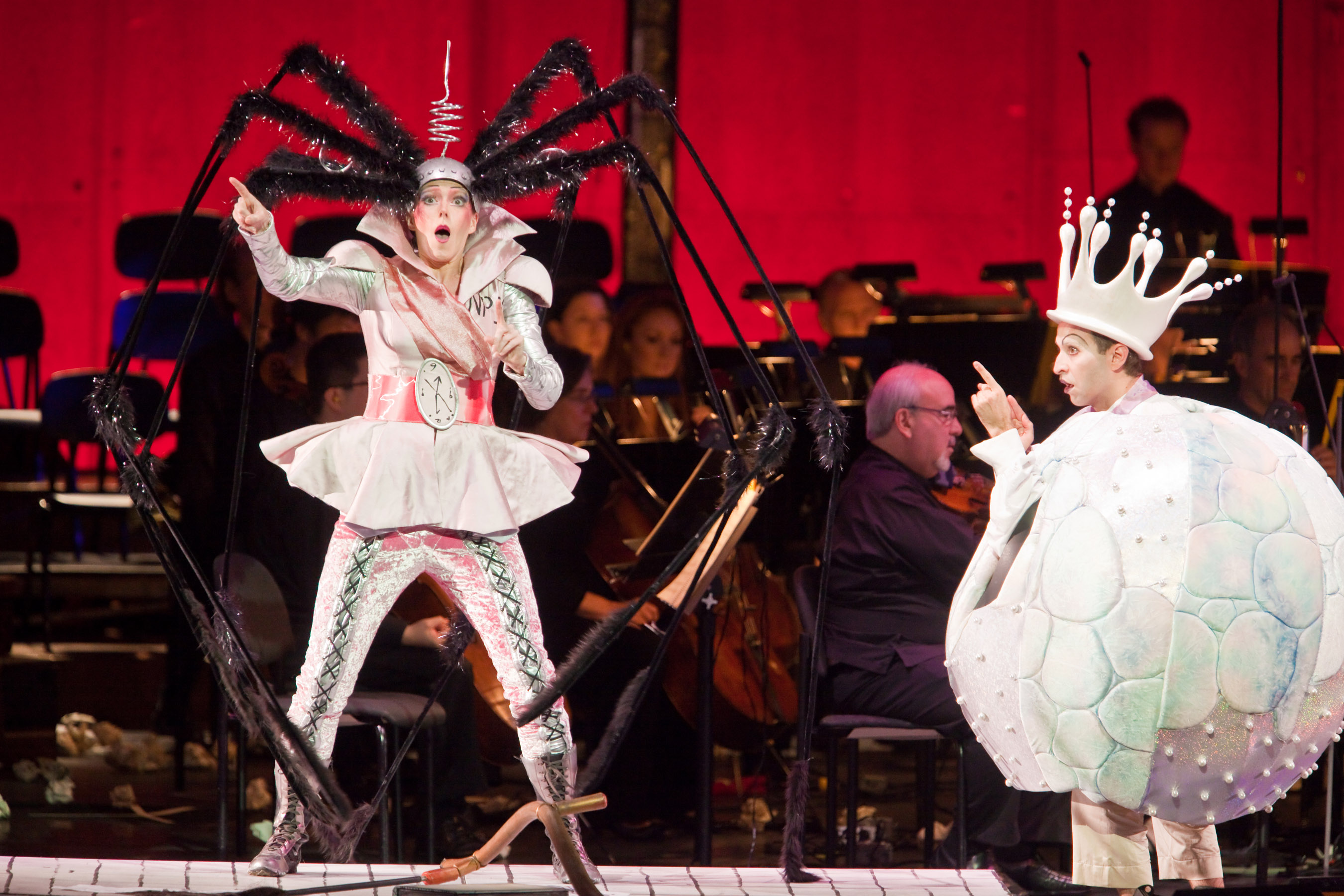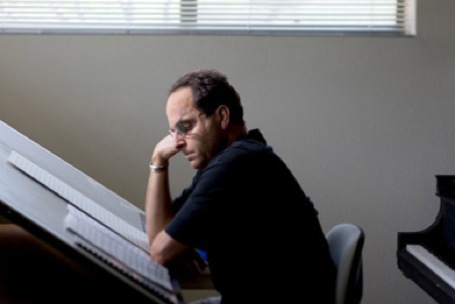 |
| Flyer from the first June in Buffalo, 1975 |
2015 is shaping up to be a thrilling year for June in Buffalo, the Center's annual festival and conference dedicated to composers. June in Buffalo (June 1-7) offers an intensive schedule of seminars, lectures, workshops, professional presentations, participant forums, and open rehearsals in addition to concert after concert of excellent performances. This year the festival celebrates its 40th anniversary, and the 30th anniversary of David Felder's tenure as artistic director. It also marks the second year of the June in Buffalo Performance Institute (May 29-June 7), which invites young performers with an interest in contemporary music to take part in a master classes, lessons, and seminars with some of the strongest performers in the contemporary music field.
 |
| David Felder |
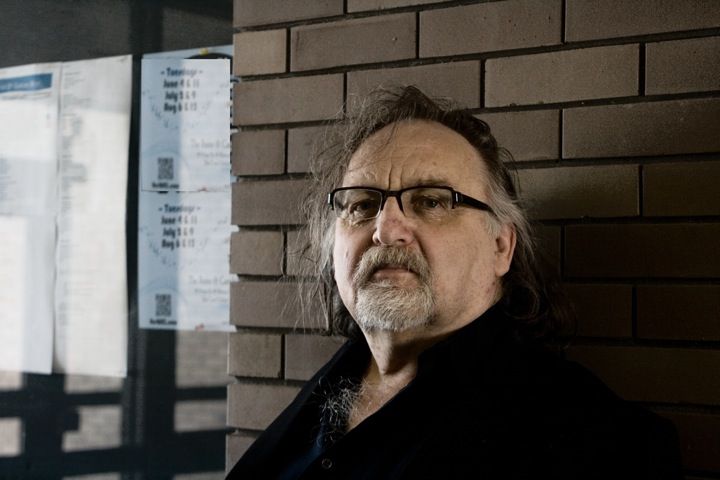 |
| Brian Ferneyhough at JiB 2013 |
Among the resident ensembles at this year's festival, are the Buffalo Philharmonic Orchestra, Ensemble SIGNAL, Meridian Arts Ensemble, the New York New Music Ensemble, the Slee Sinfonietta, and Talujon Percussion Ensemble, in addition to special guests Irvine Arditti, Heather Buck, Ethan Herschenfeld, and Brad Lubman. With such a roster of internationally-renowned interpreters of contemporary music, it's tough not to be excited about all the concerts—and if there's one thing June and Buffalo is known for, it's all the innovative music that is constantly being performed. With afternoon and evening concerts by such top-notch contemporary ensembles happening every day, and a wide breath of musical aesthetics represented, there's definitely something for everyone with adventurous taste and open ears.
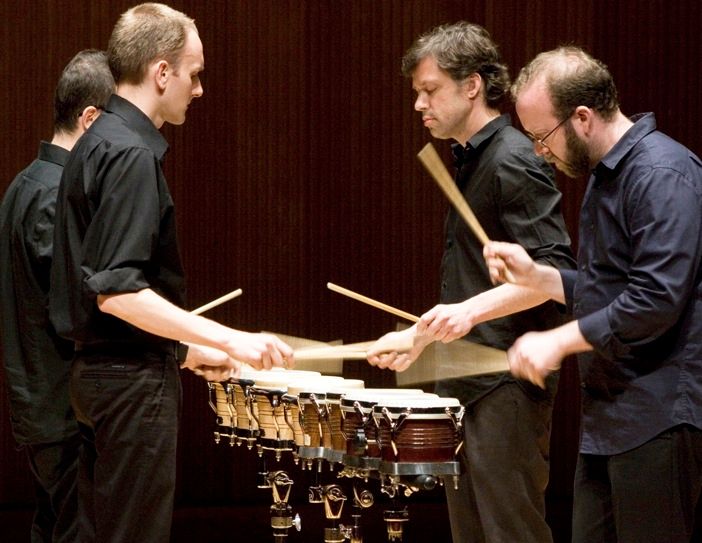 |
| Talujon at JiB 2013 |
Some of the great performances we're looking forward to include the New York New Music Ensemble playing Lukas Foss's Echoi and Performance Institute director Eric Huebner playing all (that's right) of Roger Reynolds' piano études. The festival will see the third performance of David Felder's colossal song cycle Les Quatres Temps Cardinaux by Ensemble SIGNAL and the Slee Sinfonietta (click here to read more about the last performance). There will be an evening of percussion music at which Talujon Percussion Quartet will perform works by Martin Bresnick, Steven Stucky, and Iannis Xenakis, and Ensemble SIGNAL's Bill Solomon will play Ferneyhough's spiky solo piece, Bone Alphabet. The inimitable Meridian Arts Ensemble will present a program including Felder's Canzone XXXI and Charles Wuorinen's Brass Quintet (which was premiered at June in Buffalo fifteen years ago), and Eric Huebner and Irvine Arditti will play Elliott Carter's complex Duo for Violin and Piano. The festival will wrap up with a special performance by the Buffalo Philharmonic, conducted by Stefan Sanders, playing Felder's Six Poems from Nerudas "Alturas..." and Morton Feldman's exquisitely-titled On Time and the Instrumental Factor.
 |
| Irvine Arditti at JiB 2014 |
In what is fast becoming a June in Buffalo tradition, Irvine Arditti will mesmerize the audience with an intimate solo recital in UB's Baird Recital Hall. There is something particularly enjoyable about seeing an audience of young composers watch in wide-eyed disbelief as the virtuoso violinist effortlessly plows through complex works like Sciarrino's Sei Capricci. This year, Arditti's concert will feature works by Roger Reynolds and Brian Ferneyhough, in addition to the delicate fragility of Morton Feldman's For Aaron Copland.
 |
| Kleinhans Music Hall |
While most of the events take place at UB's North Campus, for the past several years, the festival has made a point of utilizing some of the fantastic spaces in the city proper (I remember, in particular, an electrifying performance by the Genkin Philharmonic at Hallwall's at JiB 2011). This year, the festival will feature two downtown performances on Friday, June 5th. First, Eric Huebner's Music in Buffalo's Historic Places series will host a concert at the majestic Kleinhans Music Hall, home to the Buffalo Philharmonic Orchestra. The concert will feature performances by Performance Institute faculty and students playing classic works by composers who have a history of association with June in Buffalo. Afterwards, the festival moves down the street to one of Buffalo's youngest venues, Pausa Art House, for a solo concert by JiB faculty composer Harvey Sollberger, who will perform works for flute and accordion(!). From a concert by up-and-coming performers at a hall which is a National Historic Landmark, to a concert in a sharp new venue by a composer who was present at June in Buffalo's revival in 1986, the evening will be a lively tour through the past and present of both the festival, and its city—definitely not to be missed!
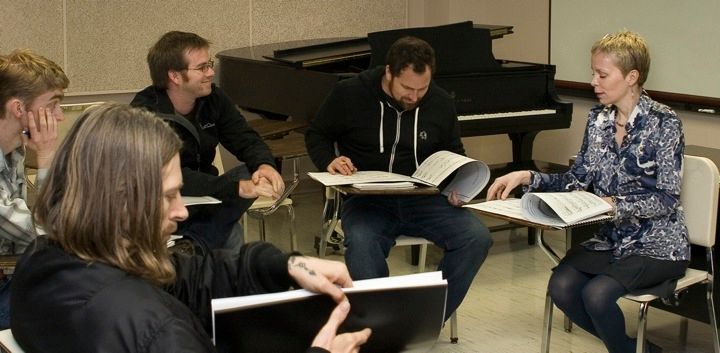 |
| Augusta Read Thomas leading a masterclass at JiB 2013 |
Each of the invited participant composers will have one of her/his pieces performed during the festival. Young composers have the option of writing for Meridian Arts Ensemble, NYNME, Talujon, or members of the Slee Sinfonietta (included in the latter are the Performance Institute faculty performers). While composers are encouraged to write for members of the aforementioned ensembles, solos or duos for any orchestral instruments will also be considered. Participant composers will also have the opportunity to present their work in masterclasses with the JiB faculty composers. This year, with eight senior composers in attendance, participants won't be able to work with every faculty composer, but each young composer will have the chance to work with a randomly selected subset of the faculty. Application info is available online, the (postmark) deadline for submission is February 16, 2015. Fees for participant composers are $750, with optional on-campus housing for $350.
If you want to come to June in Buffalo and be a part of the celebration, but you don't have time between now and June to compose a new piece for brass quintet or pierrot ensemble, there's great news: you can apply as an auditor. Auditors get to be a part of all the festivities, attending concerts and composer seminars, and are even able to present their work in masterclasses. The only difference between auditors and participants is that the former don't have their pieces performed. There is also a significantly reduced fee for auditors ($250).
 |
| Performance Institute alum TJ Borden performs at JiB 2013 |
Performers invited to attend the Performance Institute will take part in master classes, lessons, and seminars with the performance faculty, and will work together through intensive rehearsals and workshops to prepare ensemble and solo works for performance at the aforementioned concert in Kleinhans. Application info the JiB Performance Institute is available online, and the deadline for submission is March 2, 2015. Fees for participants are $950, with optional on-campus housing for $450.
There is lots of exciting music to make and even more to hear. We hope to see you at this year's festival!
—Ethan Hayden








